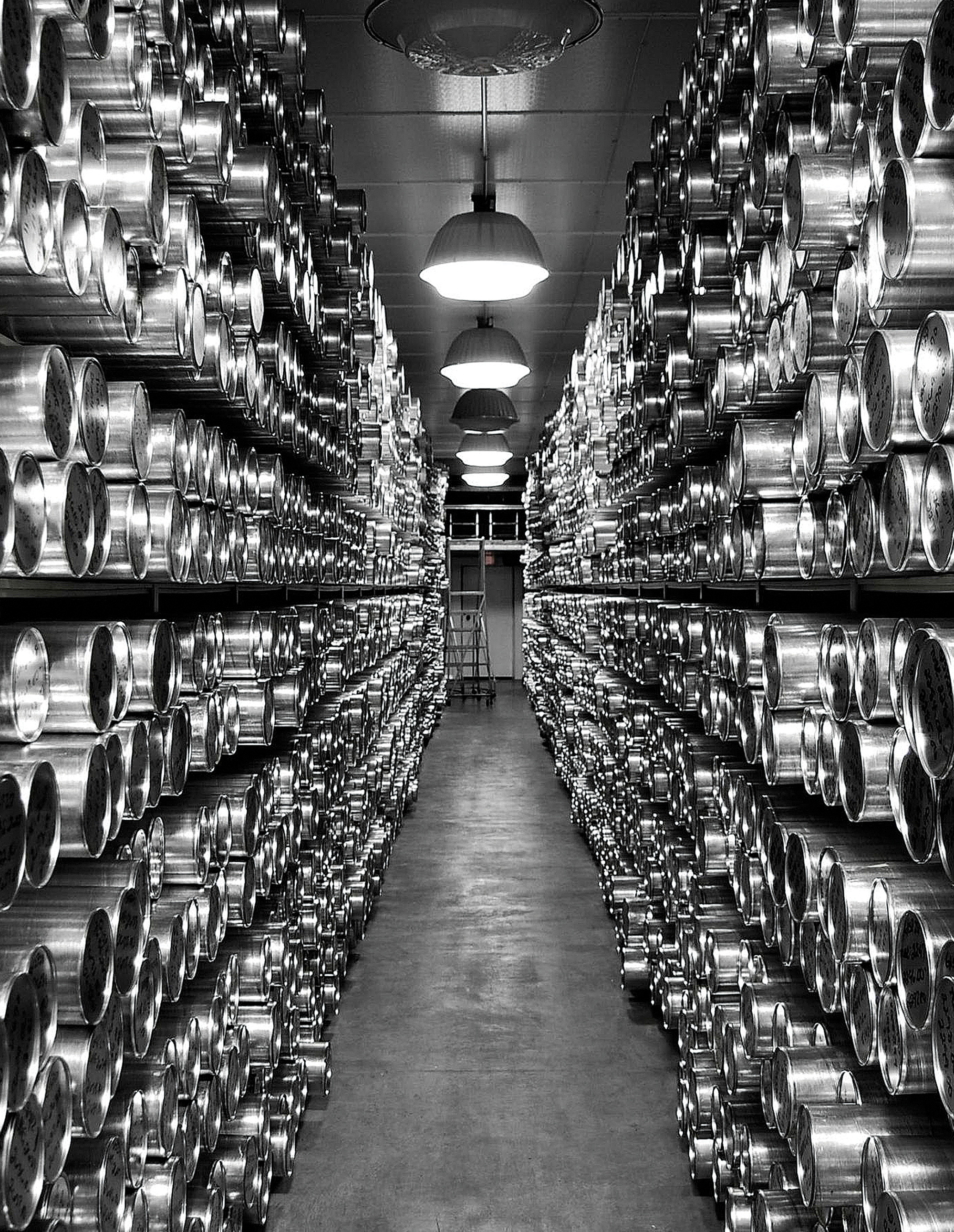The Archive of Ice
Tracing climate change at the National Ice Core Laboratory
D. Graham Burnett
Nestled in a neighborhood of comparably nondescript brick buildings and office warehouses west of Denver (the town is Lakewood; the Front Range defines the horizon; there is lots of parking) sits an uncanny little perturbation in time, space, and temperature: the US National Ice Core Laboratory (NICL), the largest repository of archived ancient ice on the planet. Within the unremarkable walls of this federal institution, in a freezer room ninety-four feet long, fifty-five feet wide, and twelve feet high (the steady temperature of which is maintained at negative thirty-eight degrees Celsius), more than seventeen thousand meters of columnar ice lie still in silvered cardboard tubes stacked on steel racks.

The visitor stands in this room (though not for very long, since it is extremely cold) in the presence of more than ten miles of deep time, arranged as if by Walter de Maria: a receding vista of indexed cylinders, which secrete many broken kilometers—not of brass, but of white-blue waterglass cored from nearly two hundred ice sheets and glaciers and mountaintops around the world. Here, on these shelves, sleep millions upon millions of little slivers of compressed snow—preserved slips of all the winters the earth has seen in the last five hundred thousand years.
A great deal of what we now think we know about the changing climate of our planet hails from these transparent bars of ancient water. And it is a testimony to how rapidly that climate is changing that a number of the cores in Lakewood came from glaciers that no longer exist. The keepers of the archive of ice have, of necessity, gone to great lengths to ensure redundancy upon redundancy in their refrigeration capacity—multiple compressors and automatic backup generators and an emergency mechanical team on call to service the cooling systems 24 hours a day 365 days a year.
Since there is ice in this freezer that cannot now be replaced.
• • •
Ice core science sits at the center of some of the very most contentious geopolitical and epistemic controversies of our time. How exactly to read the long chronicle of Earth history that appears to be preserved in the tight-packed layers of the ancient ice? This is the nitty-gritty of disputes between climate-change deniers and their opponents. The bench-science details are complex, but a brief résumé of the basics is easy enough.[1]
Anywhere that repeated, cyclical snowfalls build up over considerable periods of time—high altitudes, high latitudes—one sees, eventually, the compression of sequential snow layers into stratigraphic ice formations. The resulting mass preserves the layering structure of its deposition. During the process of compression, bubbles of atmospheric air are trapped in these layers. The result? Large, old glaciers are effectively gigantic napoleons (meaning the pastry, not the general) of prehistoric water and atmosphere—dense mille-feuilles, each “leaf” of which records the conditions of the planet in a given winter now long past. We can now answer, concisely, François Villon’s heartrending refrain from the “Ballade des dames du temps jadis” (ca. 1460): Où sont les neiges d’antan? Where are the snows of yore? They are in Lakewood, Colorado, sitting on a shelf. Within them, the earth-breath of yesteryear.